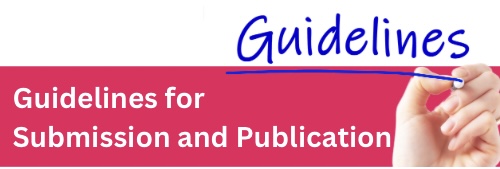PREDICTORS OF BOWEL PREPARATION QUALITY IN PATIENTS UNDERGOING COLONOSCOPY
Keywords:
bowel preparation, health literacy, patient activationAbstract
This predictive research aimed to examine the predictors of bowel preparation quality- bowel preparation knowledge, health literacy, patient activation, bowel preparation behavior, and patient-health care provider communication with patients undergoing colonoscopy. The sample included 193 outpatients undergoing colonoscopy at a high-level tertiary hospital. Data were collected using questionnaires that evaluated bowel preparation knowledge, health literacy, patient activation, bowel preparation behavior, communication between patient and health care provider, and bowel preparation quality. The reliability indices of the research instruments were assessed using Cronbach’s alpha coefficients, yielding values of .70, .94, .83, .79, and .94, respectively. Data analysis employed hierarchical binary logistic regression statistics with the backward Wald method.
The results of this study revealed that patients with higher levels of patient activation, health literacy, knowledge about bowel preparation, and positive bowel preparation behavior exhibited better bowel preparation quality, with odds ratios of 2.93, 2.05, 1.34, and 1.28, respectively. However, patient-provider communication was not identified as a predictor of bowel preparation quality.
Hence, healthcare providers should encourage patients undergoing colonoscopy based on patient activation, health literacy, bowel preparation behavior and knowledge to allow patients to access bowel preparation quality.
Downloads
References
Bhanthumkomol, P., Siramolpiwat, S., & Vilaichone, R. K. (2014). Incidence and predictors of inadequate bowel preparation before elective colonoscopy patients. Asian Pacific of Cancer Prevention, 15(24), 10763-10768. https://doi.org/10.7314/ apjcp.2014.15.24.10763.
Budhwani, H., Gakumo, C. A., Yigit, I., Rice, W. S., Fletcher, F. E., Whitfield, S., . . . Turan, J. M. (2022). Patient health literacy and communication with providers among women living with HIV: A mixed methods study. AIDS and Behavior, 26(5), 1422-1430. https://doi.org/10.1007/s10461-021-03496-2
Buttapim, S., Wanitkun, N., Sinthu, S., & Kasemsan, C. (2018). Predictive factors of patients’ quality of life three months after post coronary artery bypass graft surgery. Thai Journal of Cardio-Thoracic Nursing, 29(2), 127-140.
Calderwood, A. H., & Jacobson, B. C. (2010). Comprehensive validation of the Boston bowel preparation scale. Gastrointest Endoscopy, 72(4), 686-692. https://doi.org/10.1016/j.gie.2010.06.068
Constand, M. K., MacDermid, J. C., Dal Bello-Haas, V., & Law, M. (2014). Scoping review of patient-centered care approaches in healthcare. BMC Health Services Research, 14(1), 271. https://doi.org/10.1186/1472-6963-14-271
Choocherd, S., Wanitkun, N., Danaidusadeekul, S., & Yottasurodom, C. (2016). Relationships among health literacy, severity of disease, patient engagement, perception of person-centered care and quality of life in patients after coronary artery bypass graft surgery. Nursing Science Journal of Thailand, 34(2), 94–106.
Donabedian, A. (1988). The quality of care: how can it be assessed? JAMA, 260(12), 1743-1748. https://doi.org/10.1001/jama.1988.03410120089033
Fang, J., Fu, H. Y., Ma, D., Wang, D., Liu, Y. P., Wang, Y. F., . . . Li, Z. S. (2016). Constipation, fiber intake and non-compliance contribute to inadequate colonoscopy bowel preparation: a prospective cohort study. Journal of Digestive Diseases, 17(7), 458-463. https://doi.org/10.1111/1751-2980.12376
Gandhi, K., Tofani, C., Sokach, C., Patel, D., Kastenberg, D., & Daskalakis, C. (2018). Patient characteristics associated with quality of colonoscopy preparation: A systematic review and meta-analysis. Clinical Gastroenterology and Hepatology, 16,357-369. https://doi.org/10.1016/j.cgh.2017.08.016
Gellert, P., & Tille, F. (2015). What do we know so far? The role of health knowledge within theories of health literacy. European Health Psychologist, 17(6), 266-274.
Greene, J., Hibbard, J. H., Sacks, R., Overton, V., & Parrotta, C. D. (2015). When patient activation levels change, health outcomes and costs change, too. Health Affairs, 34, 431-437. https://doi.org/ 10.1377/hlthaff.2014.0452
Hassan, C., East, J., Radaelli, F., Spada, C., Benamouzig, R., Bisschops, R., . . . Ferlitsch, M. (2019). Bowel preparation for colonoscopy: European Society of Gastrointestinal Endoscopy (ESGE) guideline-update 2019. Endoscopy, 51(8), 775-794. https://doi.org/10.1055/a-0959-0505
Hibbard, J. H., & Greene, J. (2013). What the evidence shows about patient activation: Better health outcomes and care experiences; fewer data on costs. Health Affairs, 32(2), 207-214. https://doi.org/10.1377/hlthaff.2012.1061
Hibbard, J. H., Stockard, J., Mahoney, E. R., & Tusler, M. (2004). Development of the patient activation measure: Conceptualizing and measuring activation in patients and consumers. Health Services Research, 39(4p1), 1005-1026. https://doi.org/10.1111/j.1475-6773.2004.00269.x
Hong, H., & Oh, H. J. (2020). The effects of patient-centered communication: Exploring the mediating role of trust in healthcare providers. Health Communication, 35(4), 502-511. https://doi.org/10.1080/10410236.2019.1570427
Hosmer Jr, D. W., Lemeshow, S., & Sturdivant, R. X. (2013). Applied logistic regression (Vol. 398). John Wiley & Sons.
Jacobson, B. C., & Calderwood, A. H. (2020). Measuring bowel preparation adequacy in colonoscopy-based research: Review of key considerations. Gastrointestinal Endoscopy, 91(2), 248-256. https://doi.org/10.1016/j.gie.2019.09.031
King-Marshall, E. C., Mueller, N., Dailey, A., Barnett, T. E., George, T. J., Sultan, S., & Curbow, B. (2016). It is just another test they want to do: Patient and caregiver understanding of the colonoscopy procedure. Patient Education and Counseling, 99(4), 651-658. https://doi.org/10.1016/j.pec.2015.10.021
Kunnackal, J. G., Thuluvath, A. J., Carrier, H., Ahuja, N. K., Gupta, E., & Stein, E. (2019). Poor health literacy and medication burden are significant predictors for inadequate bowel preparation in an urban tertiary care setting. Journal of Clinical Gastroenterology, 53(9), e382-e386. https://doi.org/10.1097/mcg.0000000000001177
Martel, M., Ménard, C., Restellini, S., Kherad, O., Almadi, M., Bouchard, M., & Barkun, A. N. (2018). Which patient-related factors determine optimal bowel preparation? Current Treatment Options in Gastroenterology, 16(4), 406-416. https://doi.org/10.1007/s11938-018-0208-9
McCormack, B., Dewing, J., Breslin, L., Coyne-Nevin, A., Kennedy, K., Manning, M., . . . Slater, P. (2010). Developing person-centred practice: Nursing outcomes arising from changes to the care environment in residential settings for older people. International Journal of Older People Nursing, 5(2), 93-107. https://doi.org/10.1111/j.1748-3743.2010.00216.x
National Cancer Institute. (2023). Screening guidelines Colorectal cancer using the FIT Test method and colonoscopy data recording in the ODS system. Retrieved from https://shorturl. asia/wvIjM
Plichta, S. B., Kelvin, E. A., & Munro, B. H. (2013). Munro's statistical methods for health care research (6th ed.). Wolters Kluwer Health/Lippincott Williams & Wilkins.
Ray, P., Le Manach, Y., Riou, B., & Houle, T. T. (2010). Statistical evaluation of a biomarker. Anesthesiology, 112(4), 1023–1040. https://doi.org/10.1097/ALN.0b013e3181d47604
Sachdev, R., Mo, K., Wang, K. Y., Zhang, B., Musharbash, F. N., Vadhera, A., . . . Neuman, B. J. (2023). Preoperative patient activation predicts minimum clinically important difference for PROMIS pain and physical function in patients undergoing elective spine surgery. The spine journal: official journal of the North American Spine Society, 23(1), 85–91. https://doi.org/10.1016/j.spinee.2022.08.007
Salt, E., Crofford, L. J., Studts, J. L., Lightfoot, R., & Hall, L. A. (2013). Development of a quality of patient-health care provider communication scale from the perspective of patients with rheumatoid arthritis. Chronic Illness, 9(2), 103–115. https://doi.org/10.1177/1742395312455440
Schub, T. B., & March, P. P. (2018). Colonoscopy. In. Ipswich, Massachusetts: EBSCO Publishing.
Serper, M., Gawron, A. J., Smith, S. G., Pandit, A. A., Dahlke, A. R., Bojarski, E. A., . . . Wolf, M. S. (2014). Patient factors that affect quality of colonoscopy preparation. Clinical Gastroenterology and Hepatology: The Official Clinical Practice Journal of the American Gastroenterological Association, 12(3), 451–457. https://doi.org/10.1016/j.cgh.2013.07.036
Shafer, L. A., Walker, J. R., Waldman, C., Yang, C., Michaud, V., Bernstein, C. N., . . . Singh, H. (2018). Factors associated with anxiety about colonoscopy: The preparation, the procedure, and the anticipated findings. Digestive diseases and sciences, 63(3), 610–618. https://doi.org/10.1007/s10620-018-4912-z
Smith, S. G., von Wagner, C., McGregor, L. M., Curtis, L. M., Wilson, E. A., Serper, M., & Wolf, M. S. (2012). The influence of health literacy on comprehension of a colonoscopy preparation information leaflet. Diseases of the colon and rectum, 55(10), 1074–1080. https://doi.org/10.1097/DCR.0b013e31826359ac
Sorensen, K., Van den Broucke, S., Fullam, J., Doyle, G., Pelikan, J., Slonska, Z., . . . (HLS-EU) Consortium Health Literacy Project European. (2012). Health literacy and public health: A systematic review and integration of definitions and models. BMC Public Health, 12, 1-3. https://doi.org/10.1186/1471-2458-12-80
Stevens, J. (2002). Applied multivariate statistics for the social sciences (4th ed.). Mahwah, N.J.: Lawrence Erlbaum Associates.
Trongsakul, S., Lambert, R., Clark, A., Wongpakaran, N., & Cross, J. (2015). Development of the Thai version of Mini-Cog, a brief cognitive screening test. Geriatrics & Gerontology International, 15(5), 594–600. https://doi.org/10.1111/ggi.12318
Underhill, M. L., & Kiviniemi, M. T. (2012). The association of perceived provider-patient communication and relationship quality with colorectal cancer screening. Health Education & Behavior: The Official Publication of the Society for Public Health Education, 39(5), 555-563. https://doi.org/10.1177/1090198111421800
Wanitkun, N., Pattaramongkolrit, S., Vichathai, C., Bhechrung, B., Kloyahem, S., Batterham, R., Osbon, R. (2014). Thai health literacy. Health System Research Institute. Retrieved from http://kb.hsri.or.th/dspace/handle/11228/3987
Yadlapati, R., Johnston, E. R., Gregory, D. L., Ciolino, J. D., Cooper, A., & Keswani, R. N. (2015). Predictors of inadequate inpatient colonoscopy preparation and its association with hospital length of stay and costs. Digestive Diseases and Sciences, 60(11), 3482-3490. https://doi.org/10.1007/s10620-015-3761-2

Downloads
Published
How to Cite
Issue
Section
License
Copyright (c) 2023 JOURNAL OF THE POLICE NURSES

This work is licensed under a Creative Commons Attribution-NonCommercial-NoDerivatives 4.0 International License.
ผลงานที่ได้ตีพิมพ์แล้วจะเป็นลิขสิทธิ์ของวารสารพยาบาลตำรวจ














